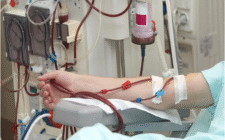Chronic Obstructive Pulmonary Disease (COPD) is a progressive lung condition that affects millions worldwide. Characterized by persistent airflow limitation and chronic inflammation, COPD includes conditions such as chronic bronchitis and emphysema. Nurses play a vital role in managing COPD, helping patients maintain lung function, prevent complications, and improve quality of life. Accurate nursing assessment and well-defined nursing diagnoses are essential to deliver personalized and effective care. Read more
Understanding COPD and Its Impact
COPD develops primarily due to long-term exposure to irritants like cigarette smoke. Other risk factors include air pollution, occupational hazards, recurrent respiratory infections, and genetic conditions such as alpha-1 antitrypsin deficiency. Common symptoms include shortness of breath, chronic cough with mucus production, wheezing, chest tightness, and frequent respiratory infections. These symptoms can significantly affect daily activities, making nursing interventions crucial for patient well-being.
Key Nursing Diagnoses in COPD
Nursing diagnoses identify patients’ actual or potential health problems, guiding the selection of interventions. In COPD, several common nursing diagnoses are observed:
- Activity Intolerance
Patients with COPD often experience fatigue and shortness of breath during physical activity due to reduced oxygenation. Nursing interventions focus on energy conservation techniques, gradually increasing activity levels, monitoring vital signs during exertion, and encouraging rest periods to prevent overexertion. - Ineffective Airway Clearance
Excessive mucus and airway obstruction are frequent in COPD patients. Interventions include assisting with coughing techniques, chest physiotherapy, and postural drainage. Nurses also educate patients on using incentive spirometry and correctly administering inhaled medications to maintain clear airways. - Impaired Gas Exchange
Hypoxemia, or low blood oxygen levels, is a common complication. Nurses monitor oxygen saturation and provide supplemental oxygen as prescribed. Positioning patients to optimize lung expansion and encouraging controlled breathing techniques, such as pursed-lip breathing, also improve oxygenation. - Deficient Knowledge
Many patients lack awareness of how to manage COPD effectively. Nurses play a key role in educating patients about their condition, medication administration, inhaler techniques, and recognizing early signs of exacerbation. Education empowers patients to actively participate in their care, promoting adherence and reducing hospitalizations.
Nursing Interventions and Monitoring
Effective COPD management relies on consistent monitoring and timely interventions. Nurses assess respiratory rate, oxygen saturation, sputum characteristics, and signs of distress. They also watch for complications affecting the cardiovascular system, such as cor pulmonale, which can arise from prolonged low oxygen levels.
Participation in pulmonary rehabilitation programs is another critical component. These programs combine supervised exercise, breathing techniques, and education to improve physical endurance and overall quality of life. Nurses support patients throughout the program, ensuring proper technique and progress tracking.
Lifestyle guidance is also vital. Smoking cessation is the single most important intervention for slowing disease progression. Patients are advised to avoid pollutants and respiratory irritants, maintain a nutritious diet to preserve muscle strength, and receive recommended vaccinations to prevent infections.
Patient Education and Long-Term Care
Nursing care extends beyond immediate symptom management. Patient education ensures long-term adherence to treatment plans. Teaching self-monitoring strategies, such as tracking breathlessness, sputum changes, and oxygen levels at home, helps patients detect early exacerbations. Early intervention reduces the risk of complications and emergency hospital visits.
Telehealth and remote monitoring are increasingly used to support patients with limited mobility. Nurses can provide guidance virtually, review home-recorded data, and adjust care plans as needed, maintaining continuous support even outside clinical settings.
Conclusion
COPD is a challenging chronic condition, but nursing care can significantly improve patient outcomes. Accurate nursing diagnoses—covering activity intolerance, airway clearance, gas exchange, and knowledge deficits—allow nurses to implement targeted interventions. By combining assessment, education, monitoring, and lifestyle support, nurses empower patients to manage their COPD effectively, enhancing both independence and quality of life.




